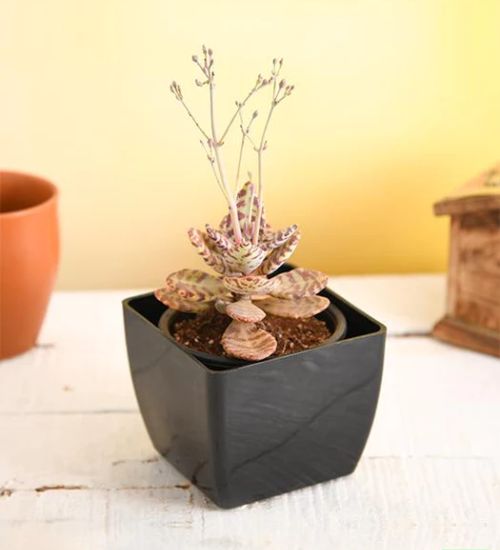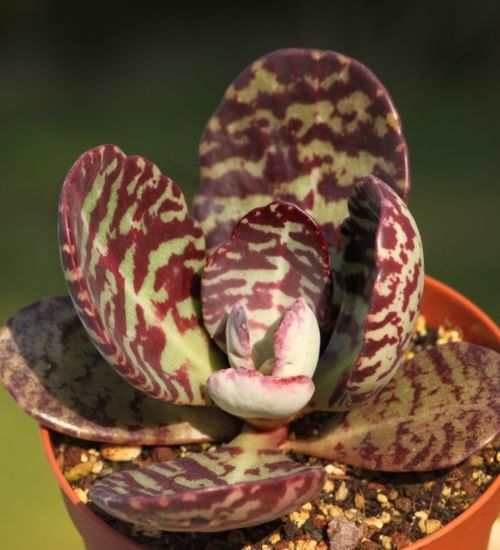Sun: full sun to partial shade
Water: Typical water needs for a succulent
Temperature: Zone 8a from 10° F to 15° F (-12.2 ° C to -9.4° C)
Winter Survival: Not cold hardy
Propagation: leaves, cuttings, seeds
Flower: in the summer
Flower Type:
Toxic: Can be toxic to humans and animals
Dormant: summer
Space Requirement: Indoors & Outdoors
Common Problems: Plants may rot if overwatered, pests
Where to buy Kalanchoe humilis?
Basc Care for Kalanchoe humilis
Watering
What you need to remember is that this type of succulents needs to be watered for every 2 weeks
You can water your succulent more than often in extreme conditions but make sure that the soil is completely dry before watering your succulent again.
Fertilizing
Only feed this succulent during its active growing seasons which means spring and fall. Use the right fertilizer applied in the right amounts. Applying half-strength balanced fertilizer every month or so is recommended for optimal results.
Do not fertilize during summer as the plant is dormant.
Sun & Location Requirements for "Kalanchoe humilis"
Kalanchoe humilis needs full sun to partial shade in order to thrive. While this variety needs plenty of bright light, it is important not to place it in direct sunlight for extended periods of time as this can cause damage or scorching to the leaves and stems. A shadier spot with indirect light could be just what Kalanchoe humilis needs.
When temperatures drop below freezing, it is important to take precautions to protect Kalanchoe humilis from the cold. Insulating and providing adequate drainage for the plant are key elements in helping it survive winter weather. Wind and sun exposure should also be minimized to prevent frost damage.
Any succulents in the group will need a medium space to grow. You can place your pot at your table or window. Since this plant needs more space than mini succulents, you should consider do not plant them together with other succulents/plants.
Propagation
Propagating succulents with leaves is a satisfying way to obtain new plants. Start by cutting some healthy leaves from the mother plant, then place them on top of potting mix and water regularly. In time you'll have vibrant succulents that you grew yourself!
One way to propagate Kalanchoe humilis is by cutting
Kalanchoe humilis can be propagated from seeds. Signs of a good seed is one that is plump, dark in color and slightly sticky. To propagate X from seed, one must prepare a soil mixture of well-draining potting mix, sow the seeds evenly and lightly press them into the surface. Lastly, gently water the soil using a spray bottle and place the container in bright but indirect light.
Toxicity

Kalanchoe humilis has high levels of calcium oxalate, a substance that is toxic to both humans and animals. Ingesting parts of this succulent can cause skin irritation, difficulty breathing, blurred vision and vomiting in severe cases. Keep children and pets away from "Kalanchoe humilis" and regularly inspect for signs of damage or consumption.
Pests and Diseases
Kalanchoe humilis can be affected common pests and diseases like most of the other succulents such as aphids, mealybugs, and scale insects.
If you do spot any of pest signs, you can treat your succulent using below methods.
- Aphids: quarantine, clean infected plants, soapy water.
- Mealybugs: quarantine, clean infected plants, soapy water.
- Scale insects: quarantine, clean infected plants, soapy water.
Besides that, to prevent serious health issues from happening, keep your succulent in a well-ventilated area and check it regularly for any signs of pests or health problems.


